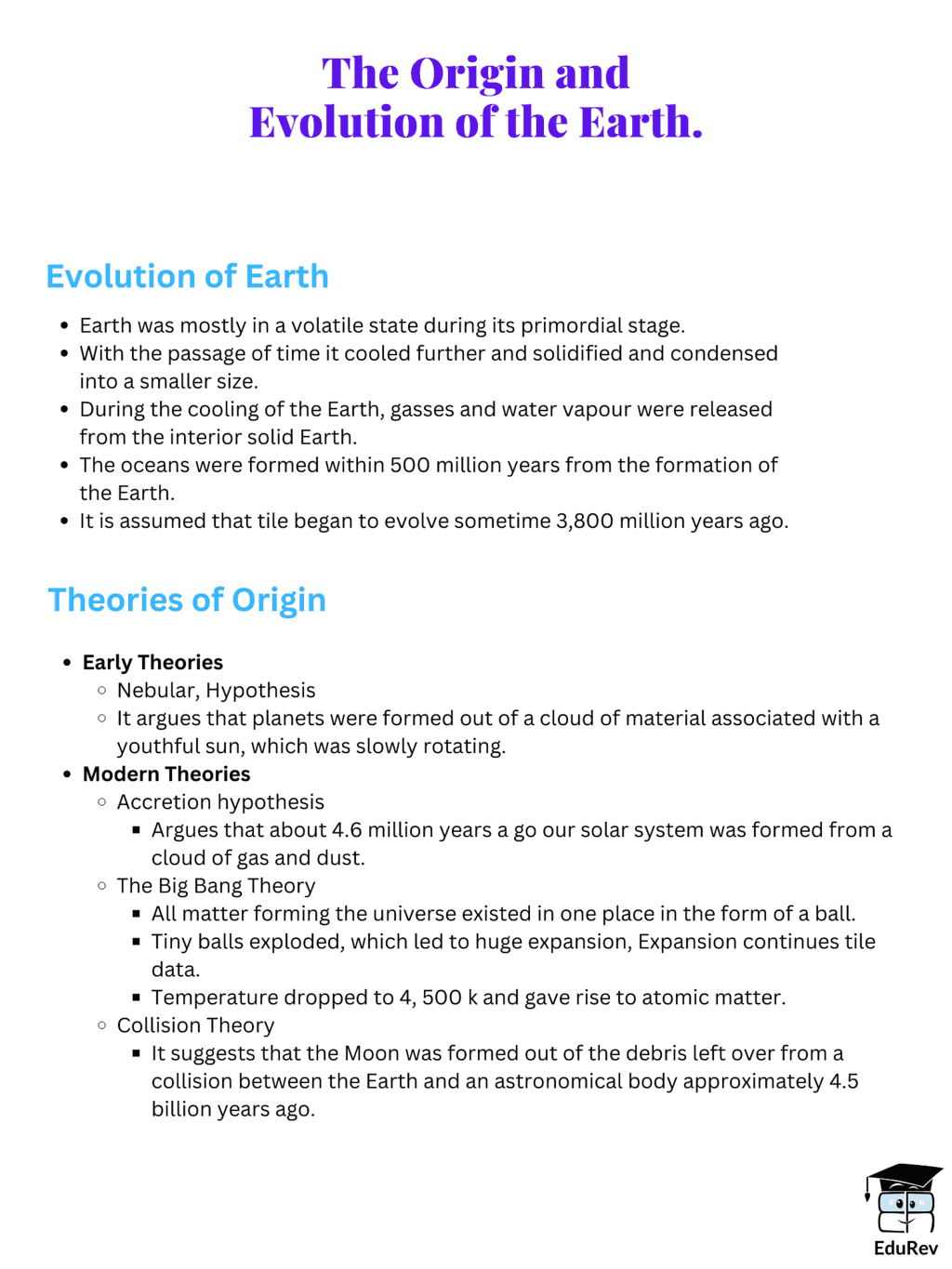Humanities/Arts Exam > Humanities/Arts Notes > Geography Class 11 > Mind Map: The Origin & Evolution of the Earth
Mind Map: The Origin & Evolution of the Earth | Geography Class 11 - Humanities/Arts PDF Download

The document Mind Map: The Origin & Evolution of the Earth | Geography Class 11 - Humanities/Arts is a part of the Humanities/Arts Course Geography Class 11.
All you need of Humanities/Arts at this link: Humanities/Arts
|
70 videos|289 docs|44 tests
|
FAQs on Mind Map: The Origin & Evolution of the Earth - Geography Class 11 - Humanities/Arts
| 1. What is the age of the Earth and how do scientists determine it? |  |
Ans. The Earth is estimated to be around 4.5 billion years old. Scientists determine its age through various methods, including radiometric dating of rocks and minerals. This involves measuring the decay of radioactive isotopes within these materials and calculating the time it took for them to reach their current state.
| 2. How did the Earth form? |  |
Ans. The Earth formed through a process called accretion, which involved the collision and accumulation of smaller celestial bodies, such as asteroids and planetesimals. Over time, these collisions led to the formation of a larger body, eventually becoming the Earth.
| 3. What are the main components of the Earth's atmosphere and how did it evolve? |  |
Ans. The Earth's atmosphere primarily consists of nitrogen (78%) and oxygen (21%), along with trace amounts of other gases such as carbon dioxide, water vapor, and argon. It evolved over billions of years through processes like volcanic activity, the release of gases from the Earth's interior, and the formation of life, which contributed to the oxygen levels we have today.
| 4. How did the Earth's oceans form? |  |
Ans. The Earth's oceans formed through a process known as the "outgassing" of volcanic activity. As the Earth's interior heated up, volcanoes released water vapor and other gases into the atmosphere. As the planet cooled, the water vapor condensed and fell back to the surface as rain, eventually filling up the depressions on the Earth's surface to form oceans.
| 5. What evidence supports the theory of continental drift and plate tectonics? |  |
Ans. The theory of continental drift and plate tectonics is supported by various lines of evidence. Fossil records show similar species on different continents that were once connected. Geological formations and rock sequences match up across continents. Additionally, the distribution of earthquakes and volcanic activity aligns with the boundaries of tectonic plates. These pieces of evidence strongly support the theory that the Earth's continents have moved and continue to move over time.
Related Searches
















